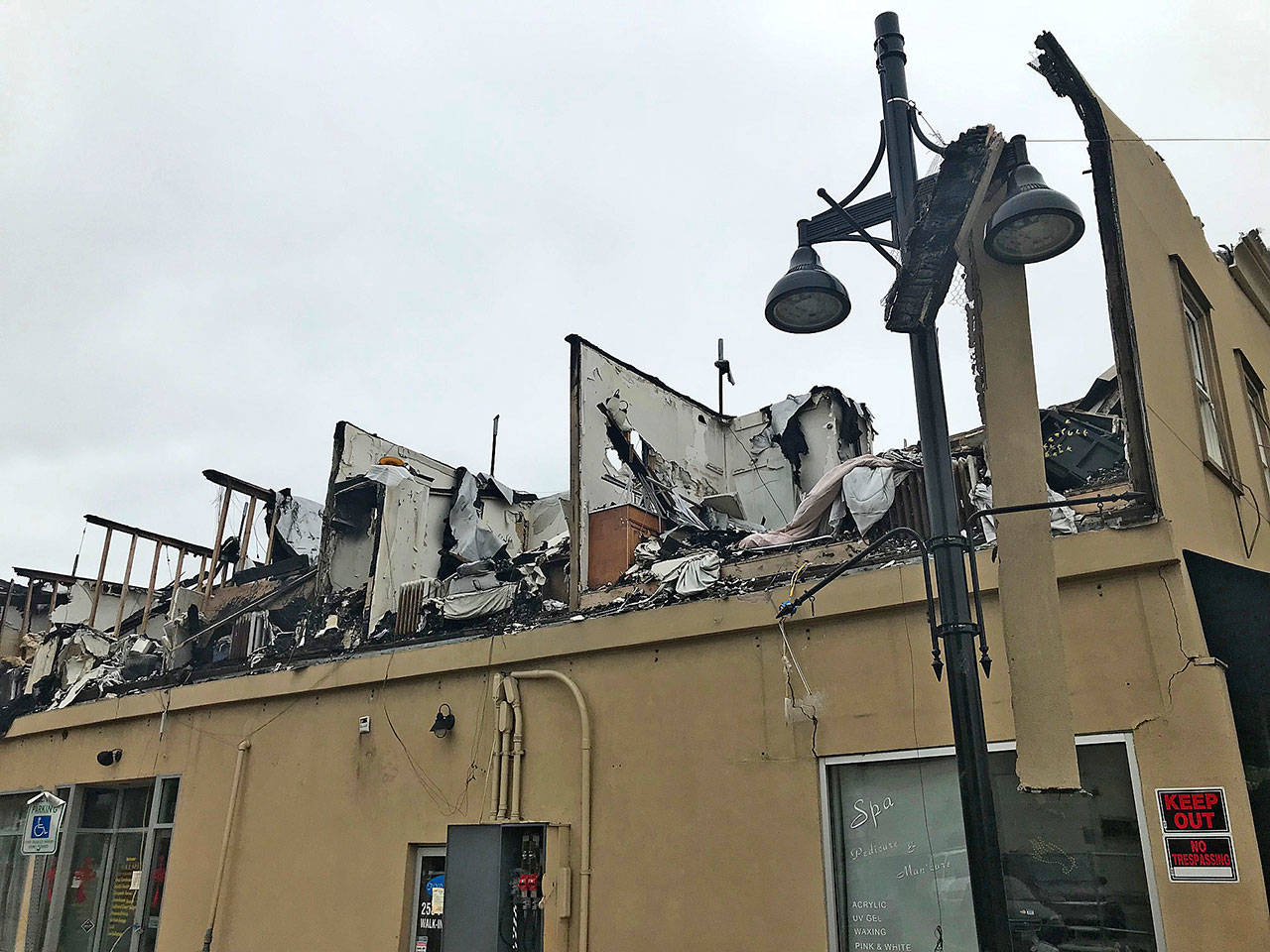On the day after Christmas last year, fire broke out in the laundry room of the Heritage Building on East Main Street.
By the time the heroic efforts of the Valley Regional Fire Authority and other local fire agencies called in to help had extinguished the fire, the second floor of the nearly 100-year-old building was gutted, and its occupants and all of the ground-floor businesses were homeless.
Most of the occupants have since found new housing, and some of the businesses, like Top Nails, have set up shop elsewhere.
But Dec. 26 was also the day a critical clock started to tick for the building’s owner, Melina Lin – her window of time to rebuild the structure as the two-story building it was, said Jeff Tate, interim director of the City of Auburn’s planning department.
“When a building is damaged by fire or earthquake or something like that, whether it conforms to current code or not, a property owner has rights to rebuild something the way that it was,” Tate explained.. “Where there are nonconformities – and you can imagine a 100-year-old building is not going to conform to modern code in terms of its lack of parking, height limits, setbacks and things of that nature – it is common for a city to allow an owner to rebuild in the same footprint, and put back into place what they had before.”
That option to rebuild a nonconforming building “typically” expires after 12 months, however, according to the City’s regulations. The word “typically” is crucial here because there are other pieces of the puzzle that increase the difficulties of the building’s owner tenfold.
So, because projects like the Heritage Building are complicated, and it could take six months for insurance and investigations to grease the skids before Lin can take the next step, the code provides flexibility.
But the clock puts Lin at a disadvantage right away.
“Right now, she is working with her insurance company to try to settle on an amount,” Tate said. “We have nothing to do with that stuff; she has to let that process unfold. Then she has to prepare plans, and she has to apply for a permit, and we have to go through a review of those plans, and who knows how long that will take? And when we issue the approvals, then it’s time for her to hire a contractor, which isn’t always the next day – sometimes it requires a month of lead time.”
“As you can see, all those steps start eating away at that 12-month clock, so we have flexibility to work with that property owner to extend it, and as long as the property owner is making progress going through those steps, the city is going to look upon that request to extend pretty favorably,” Tate said.
Lin did not respond to a request for an interview before this issue went to publication.
But another problem: according to the City’s codes, she cannot simply remove the second floor, clean things up and reopen the structure as a one-story building.
Rife with strategies and policies to achieve “a transit-oriented, pedestrian-friendly downtown,” Auburn’s city code is crystal clear about the downtown area. Typically, the ground floor is commercial, and the upper stories are residential or office space. But two stories is the minimum in the downtown, although a building’s height can reach as high as seven stories.
“If someone were to take that second story, demo it, flatten it out, clean it up and keep the first story, that would be taking what was conforming, the two-story building, now into a nonconforming status as a one-story building,” Tate said.
Parking is another headache.
What the building’s owner is grandfathered to, in planning terms, is no parking, which is typical of the buildings in the downtown that were built long before the advent of current codes.
“They had 35 units (on the) second floor of the Heritage Building, and if she rebuilds to that number, she won’t have to provide parking. But if she rebuilds to 36 units, she’ll have to provide parking for that one unit. If she went five stories tall with 200 units there, she would have to do 200 minus 35, or 165 parking stalls,” Tate said.
“It’s really tough developing a parking configuration on that site because it’s a small piece of property, and it’s rectangular. If you wanted to have retail on the first, and parking on the second and third, and residential on the fourth to sixth floors, it’s a tight circulation. It would be challenging to get structured parking as a part of it,” Tate said.
Lin is said still to be exploring all of her options, all of which present a wide range of costs and complexities.
One option is to simply raze the building to the ground, then recreate the two-story structure she had.
She could demolish the building, and leave.
Or she could demolish the building and build anew, up to seven stories high.
“I think you’ll start seeing in May some activity out there to start cleaning the second floor, demo the walls on the second floor. It sits there secured, but it might sit there as a one-story for a while if she decides to take things in phases,” Tate said.
Under investigation is the structural integrity of the first floor, and whether it could hold another floor or more, and the ground under the building, which is the sandy bed of the old White River. Rebuilding would probably require some shoring, but Lin has hired a structural engineer to assess whether she can build on top of the the first floor.



